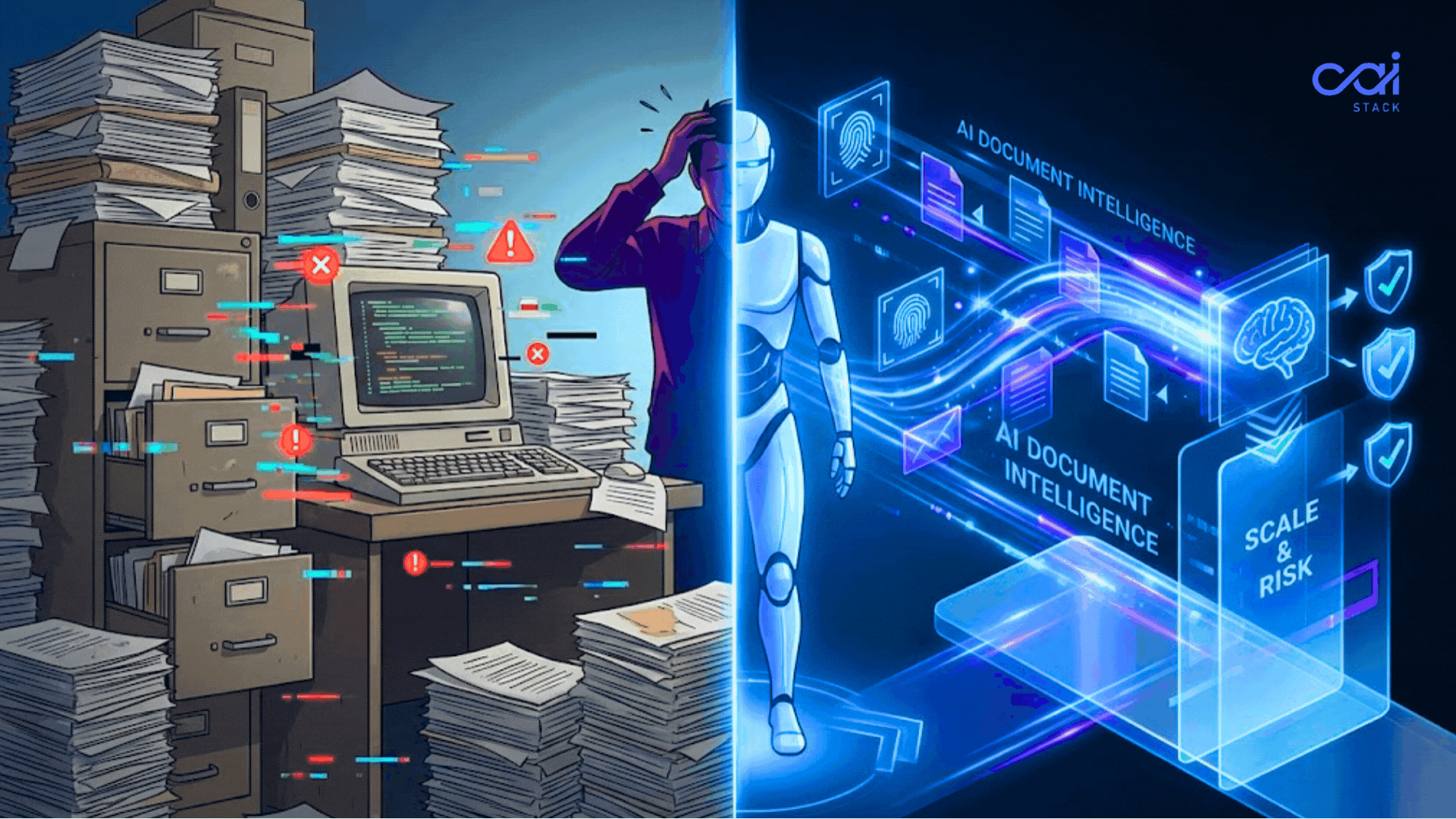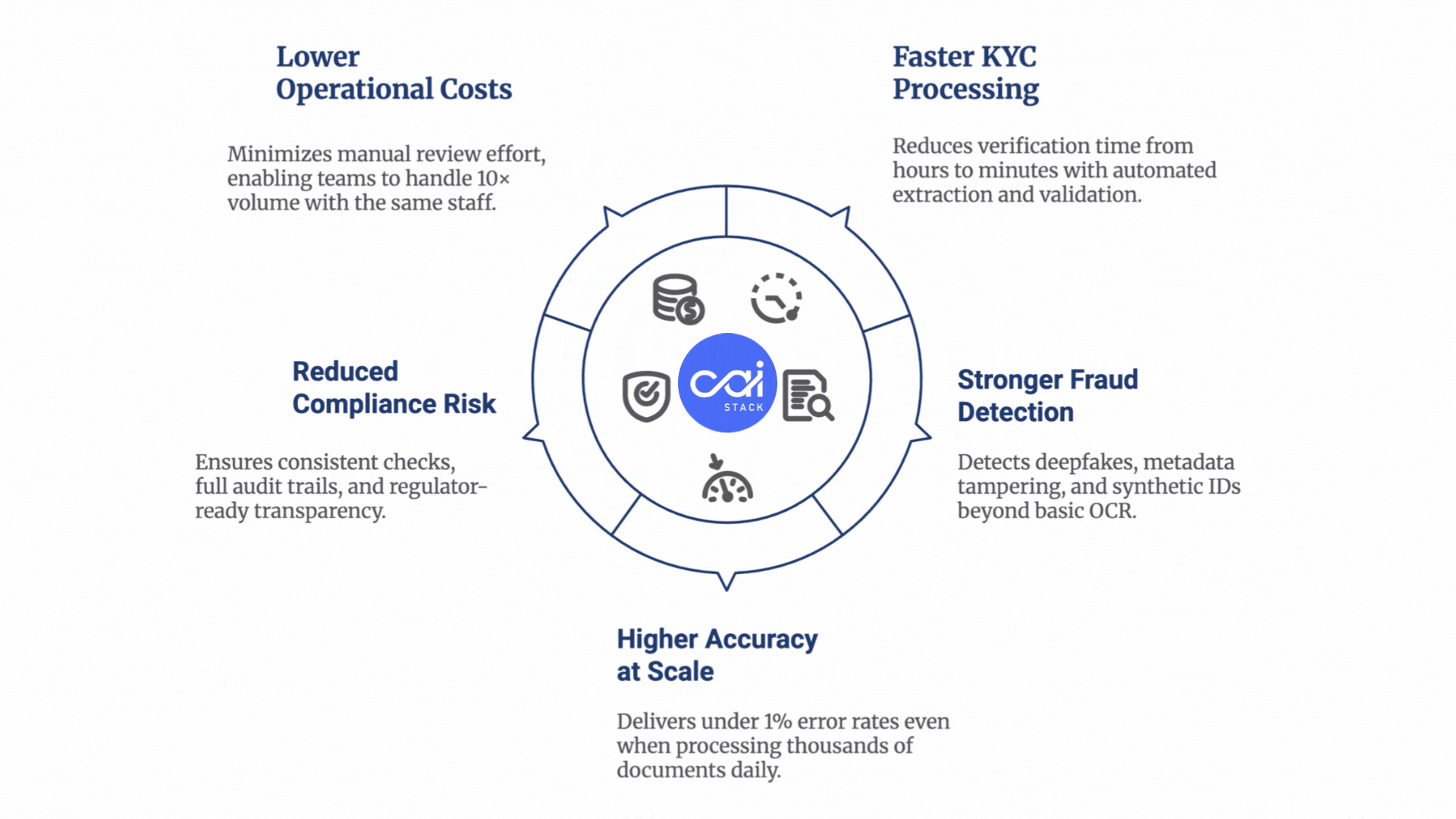CAIStack Team
When onboarding queues hit 5,000 applications, and compliance teams are drowning in PDFs, something is really messed up.

According to a 85% of organisations are considering a move to digital-first banks because of frustrating onboarding and KYC processes.
That's not a staffing problem. That's a document intelligence problem.
Legacy KYC systems were made for a different era. And that era doesn't even exist anymore, where customer volumes were predictable.
A study shows, the total cost of financial crime compliance for institutions in the U.S. and Canada has reached US$61 billion annually.
When fraud was easier. When "digitization" meant scanning paper into PDFs and calling it an advancement. But those systems can't scale and are quietly costing financial institutions a lot in lost customers, compliance risks, and manual overhead.
Know why and what actually fixes it, further in the blog below.
Most financial institutions believe their KYC process is "digital" because they accept uploads instead of paper. But it's always manual chaos.
IBM reports that deepfake-driven fraud has increased by 3,000%, overwhelming banks relying on basic OCR and manual checks.
Thus, institutions are stuck choosing between speed and safety. And that's not even sustainable.
To make it clear: OCR is not document intelligence.
OCR reads text. That's it. It sees a name "John Smith" on a passport and extracts the characters. But it doesn't understand what it's reading. It can't tell if the font looks suspicious, if the document structure matches legitimate formats, or if the data makes sense across multiple sources.
This is what separates automated KYC solutions from legacy tools. One extracts data. The other actually verifies it.
And when processing thousands of applications daily, that difference is everything.

Here's a common mistake: Financial institutions invest in "KYC automation" but don't actually automate the challenging parts.
They automate document uploads. They automate email notifications. They automate status updates.
But the actual verification? Yet manual.
This is how modern KYC automation solutions handle 10x the volume with the same team size.
When evaluating KYC platforms, here's what separates real solutions from repackaged legacy tools:
This is the baseline for AI document automation that works at enterprise scale.
The gap between legacy systems and AI-powered systems is between processing 1,000 applications monthly and 100,000.
Between 48-hour hours and 15 minutes.
Between 12% error rates and under 1%.
CAI Stack's document intelligence solutions handle everything from identity verification to fraud detection to compliance reporting - all in one solution.
Subscribe to get the latest updates and trends in AI, automation, and intelligent solutions — directly in your inbox.
Explore our latest blogs for insightful and latest AI trends, industry insights and expert opinions.
Empower your AI journey with our expert consultants, tailored strategies, and innovative solutions.